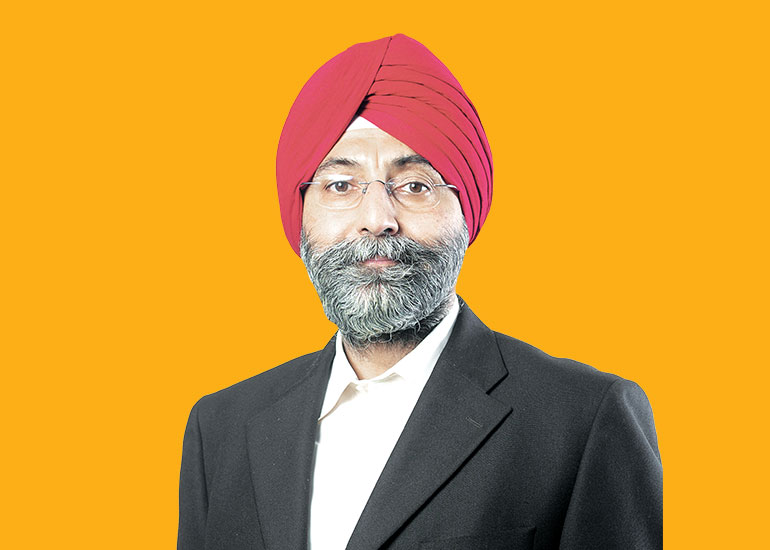Q] What were the key objectives of your recent campaign for the fortified pasta, and what has been the response from consumers so far?
The problem that we were trying to address was that in India, consumers perceive pasta as junk food. Our campaign challenges this perception and tries to convince consumers that pasta is not junk food. It’s a regular healthy option. The lie detector test and the communication have been successful in generating a significant response. The feedback has been overwhelming. We are hopeful that we are making progress to some extent. This is not a one-time event or intervention. We are on that path, and we are very pleased with the response so far.
Q] When briefing the creative agency for the ad campaign, what specific message or story did you want to convey to your audience? Also, you’ve played a significant role in the campaign, what was the strategic thinking behind it?
This time, the brief we provided to the agency was unique. We asked them to create a communication that would make us uncomfortable. This was the underlying request, and they went a step further by proposing, ‘Are you willing to take a lie detector test?’ Because I had challenged them with the request, I decided to go ahead and execute it to see what the response would be.
I was looking forward to giving this newly launched Weikfield pasta to my family, especially my children. The challenge was how to convey this message to others effectively. This led me to personally undergo a lie detector test. We enlisted the services of a professional in this field, and the recording took place with a journalist, who acted as a citizen journalist. She put me in a challenging situation, questioning the validity of the product multiple times. The underlying message we aimed to convey was that one bowl of pasta is equivalent to two bowls of spinach, backed by scientific data and evidence. This highlights iron fortification, making Weikfield’s Iron Fortified Pasta a healthier choice within the pasta category.
Q] What is your media mix and target audience for this campaign, and how do you plan to reach them effectively?
This is a slightly longer format of communication. Therefore, it is entirely led by digital channels, specifically on social media and digital platforms where we are actively promoting it. We have already garnered a million and a half views on YouTube. Our target audience is primarily mothers who prioritize health and the well-being of their children and family. This group constitutes our core target audience, and our objective is to reach, educate, and instil a sense of understanding regarding pasta and its current categorization as junk food.

Q] Considering the rapid growth of the pasta market in India, what specific strategies did Weikfield employ to become the third-largest branded pasta player in such a short period? Please share insights into your current marketing budget.
Weikfield, historically has been somewhat media-shy. It’s only under the new management and with the addition of our team that we are now allocating approximately 7 to 8 per cent of our budget to marketing expenses. The journey began by revamping the brand communication, focusing on the change in background graphics. We aimed to reposition the brand to resonate with the younger generation. Gradually, our focus has shifted to category-specific strategies. Desserts remain our primary focus, particularly during the summer months from January to June when we promote products like jelly, faluda, and custard. Pasta is the next category where we aspire to establish the Weikfield brand as a trusted name. As a legacy brand with 67 years of history, we embarked on this journey, emphasizing the strengths of our factory and our comprehensive presence in the pasta ecosystem. We cover various aspects, including pasta, gourmet pasta, instant pasta, pasta masala, and pasta sauces, making us the most integrated player in the pasta market. This integration is crucial in our efforts to cement Weikfield’s brand name in the pasta category. The advertising and promotional spending, amounting to 7 to 8 per cent of our budget is strategically channelled to support these initiatives.
Q] What is your market share in the overall pasta category and your strategies to expand it further?
We are growing at over 30 per cent, outpacing the market, and gaining market share. Four years ago, we held the sixth position, and through strategic efforts, we now have progressed to become the third-largest manufacturer in the category. AC Nielsen currently tracks gourmet pasta, but we have diverse product plays in mind for pasta. Our goal is not only to expand our presence but also to drive growth in the category and emerge as a leader in every aspect.
Q] Weikfield offers a wide array of products, including dessert mixes and instant items. Additionally, your brand is involved in the production of agricultural goods like mushrooms. How are these specific products performing in the market?
The mushroom business is under our control, but the challenge lies in the fact that it’s a fresh product. We produce approximately 8 to 10 tons of mushrooms daily and limit our sales to specific geographies, focusing on towns in Bengaluru, Pune, Mumbai, and Hyderabad. These locations are our primary markets, and we market the product under the brand name Eco Valley, which is in high demand. Being a 26-year-old player in this space, we are fortunate—or perhaps unfortunate, as there is enough demand, eliminating the need for extensive marketing efforts. Consequently, we don’t allocate significant budgets for marketing. Alongside mushrooms, we have other products under the Eco Valley brand that cater to health-conscious consumers.
Q] What are your plans for expansion and how does the company plan to adapt its marketing and distribution strategies to suit the diverse market landscape?
We are focusing primarily on metro towns because we are not a very large company, unlike Marico and other brands with extensive infrastructure catering to a broader market. Our approach is more urban-centric, and while we aim for expansion into rural areas eventually, our initial focus remains on the eight metros and the next 44 million-plus towns. These locations constitute our primary markets. For instance, with the Weikfield pasta, our specific emphasis is on Bombay, Pune, and Bangalore. We aim to strategically assess and convert consumers in these locations.
Q] In terms of sales channels, how much revenue is being generated from online and e-commerce channels? What growth trends have you observed in this area?
We are listed on Amazon, Flipkart, Big Basket, Zepto, Blinkit, and we are experiencing good engagement. As I mentioned, we are metro-centric, and consumer behaviour today is omni-channel. We observe significant double-digit growth, particularly in these new-age or emerging channels, which aligns with our digital strategy. Through influencers, we redirect consumers to the landing page or buying page for a seamless and quick purchase. We aim to eliminate friction in the purchase decision process. You like communication, you plan to buy it, and we’re working towards enabling that process.























